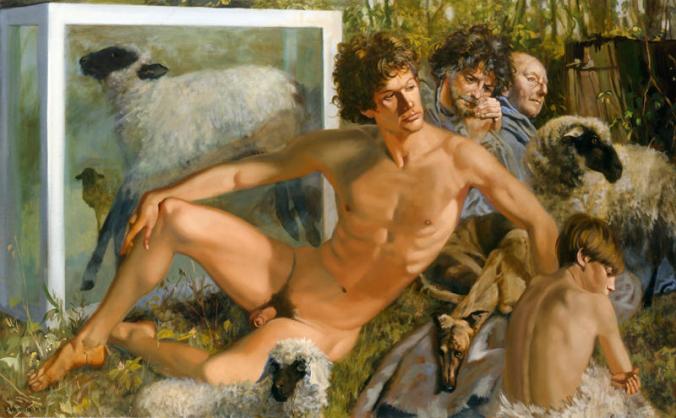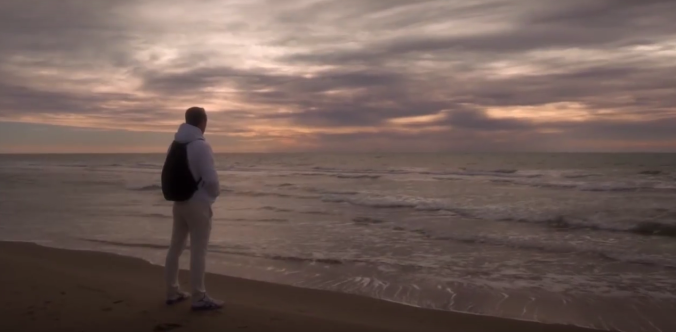
I took this photo of the Rotunda on Feb. 12 of this year, shortly before sunset.
What follows is an oped submited to the Cavalier Daily several days ago. As the newspaper has yet to publish it, and the polls open tomorrow, I feel a need to make it available through my own channels instead. If the piece is printed later, I will link to that here.
Another election season has come, and with it, another Honor referendum. Instead of directly considering the question of the sanctioning system, Nathan Gonzalez and VJ Jenkins propose that we lower the threshold for Honor constitutional amendments from supermajority (60%) to qualified majority (55%). This isn’t necessarily an unreasonable idea. As Gonzalez and Jenkins rightly note, the Honor system should be responsive to the will of the student body.
Nevertheless, the proposal as it stands is unacceptable. Gonzalez and Jenkins elide the fact that the 60% mark is not the only threshold that checks the rate of change in Honor. As the Honor Constitution currently stands, at least 10% of the eligible student body must participate in the vote. That means that under the current system, 6% of the entire eligible student body can pass a binding amendment on Honor’s constitution.
The proposed change to the system would do nothing to alter this participation threshold. It would be deeply imprudent to pass it without first ensuring a much wider field of participation. This measure would in fact enable an even smaller coterie of students to make permanent changes to the system; titling it a “Democratization” amendment is a feat of mental gymnastics.
While Gonzalez and Jenkins display a real concern for the participation of minority voices in the processes that shape honor, their admirable efforts are misplaced. The focus for Honor going forward should be widening participation in voting efforts, not breaking down prudent limits that bolster the system. UBE reports that in the elections of Spring 2015, a total of 4,290 students voted in the controversial third referendum item dealing with the implementation of a multi-sanction system. Of those students, only 18.82 % of the entire student body, a mere 2,196 voted for the measure. Perhaps enough to carry the day, but in a student body of 22,800, hardly a mandate. The other referenda that year saw similar numbers and percentages. Numbers from last year’s election are better, but still dismal. Only 34.25% of the eligible student body voted on the Honor referendum (7553 out of 22,047). Within that group, 4,447 voted for Option 2, the multi-sanction measure. That’s only 20.17% of the entire University’s student body.
Under the provisions of the new amendment, not even these pitiful numbers would be necessary to enact far-reaching change to the Honor system. If the system is truly a community of trust for all, the ethical foundation of our life in common, it shouldn’t be changed hastily. The system has been responsive to student will in the past, particularly in the recent implementation of the Informed Retraction. But to lower the vote threshold without increasing the participation requirement makes the system less democratic, not more so.
Other problems with the proposal have already been identified by Olivier Weiss, who notes that the measure is a stalking horse for the failed multi-sanction proposals of the past. He argues persuasively that “The Honor Constitution should not have its permanent requirements for change diluted in the pursuit of a specific agenda.” And the Honor Committee has helpfully pointed out that, while Gonzalez and Jenkins invoke the simple-majority amendment process of 34 states, that comparison is deeply misleading. So, too, is their disingenuous representation of the Honor Committee as “entrenched” and “stubbornly resistant to change.” Any cursory glance at the recent news out of the Honor Committee would show that both the Honor Audit Commission and the IR Working Group are busily scrutinizing existing Honor institutions in light of recent elections. Jenkins, at least, is well aware of both of these initiatives, yet chooses to ignore them in his open letter. Moreover, Jenkins and Gonzalez assume that any opposition to their proposal (and implicitly to multi-sanction) is based on “elitism…traditionalism,” and racism. Never mind the abundant reasons offered by several competent writers over the years that have nothing to do with any of those nefarious -isms. It is difficult to understate the irresponsibility of this casual, needlessly divisive accusation and its impact on our collective discourse.
Regardless, the option should fail based on its own merits—or lack thereof. It doesn’t provide for the kind of smart oversight which should accompany any shift to the system. It makes the system less democratic, not more, by enabling fewer people to enact long-lasting change. And it’s built on false narratives about the history of Honor. The only reasonable option is to vote no.



































